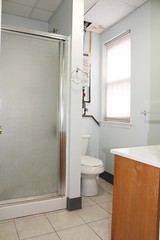Office & Home Rents On The Rise & Will Keep Rising
Posted on Feb 07 in Free Educationby adminPrint

From: bottomline.msnbc.msn.com
By: Eve Tahmincioglu
Paying rent is getting more painful for renters across the country in the face of rising demand and tight supply.
Both the commercial and residential real estate markets are seeing increases, and more are expected in the months and years to come.
Office construction starts were at the lowest level since 1960, the oldest data available from McGraw-Hill Construction; and that means there will be less space available for companies looking to rent or expand their operations.
It’s also bad timing for people who have been spooked by, or pushed out of, the residential housing market and have decided to rent instead of buy. Home ownership in the United States is at historic lows, but at the same time rental prices are on the rise.
Rent for a primary residence increased 2.5 percent in December, compared to the same month a year earlier, according to the Consumer Price Index. And Reis Inc.’s research shows that rents hit their highest level since 2007 last year, reaching $1,009 a month average rental price. At the same time, the company found, the vacancy rate dropped to 5.2 percent, from 6.6 percent last year.
“National vacancies continued to tighten sharply in the fourth quarter, bucking seasonal weakness typical of the colder months of the year,” said Victor Calanog, vice president of research & economic for Reis, in a report on the apartment sector. “In just two years after hitting all-time highs of 8 percent at the end of the tumultuous year that was 2009, vacancies have not just recovered, they have surpassed previous lows.”
Ironically, rising rents are actually making homeownership more attractive. One study by Trulia.com, a real estate research firm, found that “based on current market conditions, buying a home is cheaper than renting in 74 percent of major U.S. cities.”
On the office rental side, this economic downturn has been different from past ones, Calanog wrote.
“Previous downturns for the office sector were complicated by overbuilding; this time around, the massive decline in aggregate demand at least isn’t weighed down by a supply glut.”
Unfortunately, that means the squeeze is on for renters from all walks of life as vacancy rates drop in the face of further shrinking of supply. Fewer places to rent means landlords have the upper hand when it comes to what they can ask. And that will probably be the case for the next few years, said Mark Stapp, professor of real estate practice at the W.P. Carey School of Business at Arizona State University.
On the residential side, there will be a push toward higher rents for the next two years, he explained, while commercial real estate rental prices may continue to increase for the next three to five years.
“The supply side is so constrained because no body has been building for years,” he said, because of the economy and the difficulties businesses and developers faced getting loans.
While lending is beginning to open up a bit now, it will take years before real estate firms are able to build enough space to meet the growing demand.
It’s good news for landlords, he added, who were forced to make concessions in recent years because of weakened demand, but it will be tough sledding for apartment and office dwellers who have to pay the escalating rents.




































































